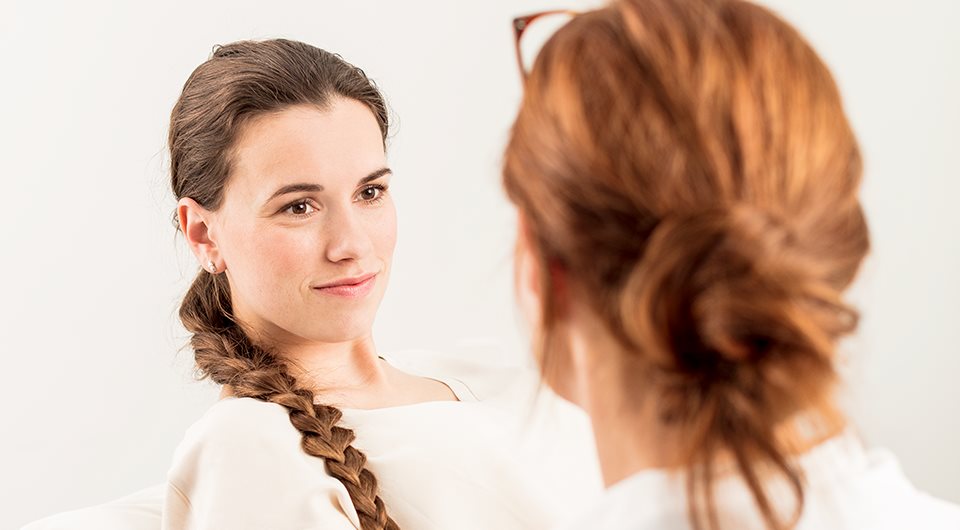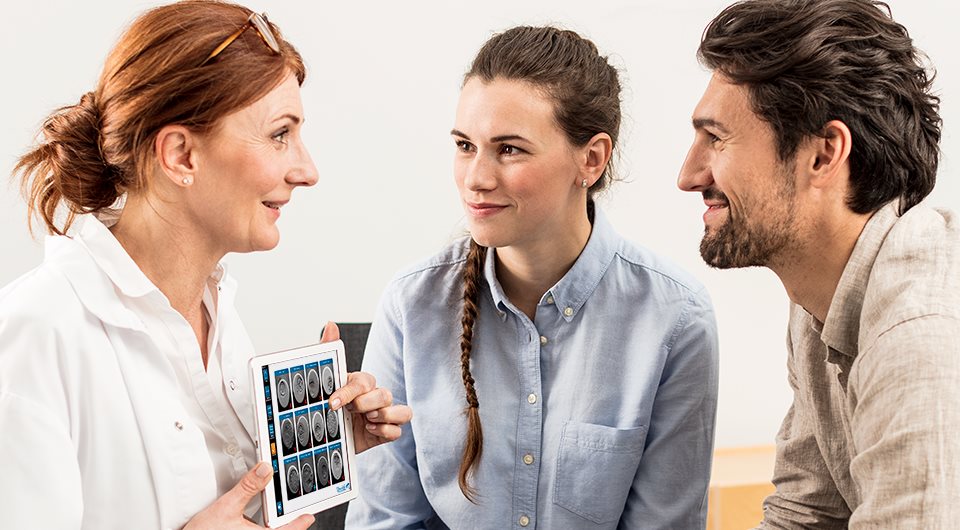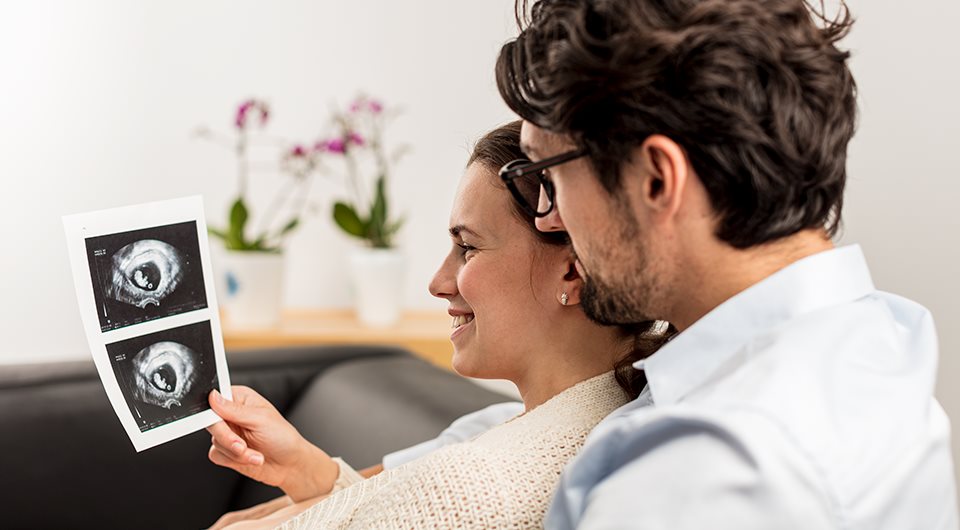Collecting the eggs easily and successfully with Sense
A retrieval needle, called Sense, gives you a fast and precise egg collection that retrieves the maximal amount of undamaged eggs without complications.
LEARN MOREAbout one in six couples have difficulty conceiving naturally.1-2 But there’s always hope. In vitro fertilisation, or just ‘IVF’, may be right for you.
Watch the video to learn more about the different steps in the IVF journey.
A retrieval needle, called Sense, gives you a fast and precise egg collection that retrieves the maximal amount of undamaged eggs without complications.
LEARN MOREEmbryologists are able to monitor your embryos' development without removing them from the safe environment of the incubator.
LEARN MOREEmbryoGlue is a medium that closely resembles the environment in the womb at the time of implantation, which can support implantation even more.
LEARN MOREBefore and during the IVF process, your clinician will monitor your ovaries and the timing of the egg release. He or she will make sure that your ovaries are producing eggs, and that your hormone levels are normal.
Most women take fertility medicines or hormones at this time to stimulate the ovaries to produce one or more eggs. Having several eggs available for IVF will increase the chances that you will get pregnant.
Your eggs will be collected through an ultrasound guided procedure where you may be sedated. A very thin needle is passed through the upper vaginal wall into the ovaries. Fluid, containing the eggs, is removed from each ovary under gentle suction.
mmediately after aspiration of the ovaries, the egg is isolated from the fluid. The egg is placed in a dish containing nutritious medium and then kept safely in an incubator.
A successful egg collection needs to be fast, precise and retrieve the maximal amount of undamaged eggs without complications. An aspiration needle with a thin tip and a larger body provides ideal conditions for maximised control, precision, aspiration time and improved patient comfort during and after the procedure.
A retrieval needle, called Sense, gives you just that.

The next step of the IVF process is the fertilisation of the egg. After a sperm sample is acquired, either from your partner or a donor, the most active sperm are mixed with the egg in a dish. This is called IVF. Your doctor may recommend that one single sperm is directly injected into the egg. This is called ICSI.
Those eggs that have been successfully fertilised (now called embryos) will be grown in the laboratory incubator for 2 to 5 days. The embryologist will monitor their development and the best will then be chosen for transfer.
While the embryos grow safely inside the incubator the embryologist will monitor their development closely. This is done either by removing the embryo from the incubator to perform three or four brief evaluations. Or by use of specially designed incubators that take an image of the embryos every 10 minutes generating a time-lapse video.
Sometimes genetic testing is also performed to make sure the embryo does not contain genetic abnormalities before finally transferring it into the womb.
EmbryoScope is an incubator with a built in camera and microscope that takes an image of your embryos every 10 minutes while they stay undisturbed in their stable and warm environment for the entire culture duration.
As a result, time-lapse videos of individual embryos are generated over the 2 to 5 days they remain safely in the EmbryoScope incubator. Your embryologist uses advanced software to look at the time-lapse movies of your embryos to select the best ones for transfer and freezing.


A specially designed digital microscope, called Primo Vision, takes images every 10 minutes while the embryos remain in the traditional incubator.
As a result, time-lapse videos of individual embryos are generated over the 2 to 5 days they remain safely in the incubator. Your embryologist uses advanced software to look at the time-lapse movies of your embryos to select the best ones for transfer and freezing.
After your embryos have grown in the laboratory incubator for a few days, the best one is selected for embryo transfer. During the procedure, the embryo will be taken from the culture dish and placed into a thin tube called a catheter. The catheter is then passed through the opening of the womb (called the cervix) and the embryo is transferred into the womb, normally using ultrasound guidance.

In less than two weeks after your embryo transfer, you are able to take a pregnancy test, either at home or at the clinic. If positive, a couple of weeks later, the health of the pregnancy is checked using ultrasound scan. Many women find out that they are pregnant after IVF, while others realise that the treatment did not work. While the average couple may undergo 2 to 3 attempts before a successful pregnancy occurs, once you get pregnant, it is no different from a pregnancy established naturally.
Often with IVF or ICSI treatment, you may have good quality embryos leftover which you can’t use in your current treatment. You can choose to freeze them to use in the future, in case treatment doesn’t work or you want to try for a sibling.
Embryos can be frozen at different stages of their development – as eggs before fertillisation, when they’re just a single cell, at the two to eight cell stage or at the blastocyst stage.
The embryos will be put in a special medium, which replaces water in their cells with cryoprotectants which protect the embryo while frozen. Water is bad for frozen embryos and must be removed because they form ice crystals which can damage the cells. Embryos will then be frozen, either by cooling them slowly or fast freezing (vitrification) and stored safely in tanks of liquid or vapor nitrogen until you’re ready to use them.

In the mid-1980s, the pregnancy rate after IVF treatment was on average approximately 15% and had the side effect of a high rate of twins and triplets. By the end of the 1990s, the corresponding figure increased to approximately 25-35% overall, although these chances vary with age and other patient factors.
The reasons behind this improvement are mainly due to refinement of the IVF method and the further development of the components used in IVF. The pregnancy rate largely depends on the group being treated. Age, diagnosis and the quality of embryos transferred are all important predictors of the chance of pregnancy.
Vitrolife was established in Sweden in 1994 when the field of assisted reproduction was still young. The possibility to help people become parents through assisted reproduction became a reality in the 1960s, following the development of IVF. The birth of Louise Brown in 1978 – the first baby born as a result of IVF – gave new hope to men and women suffering from infertility.
As IVF techniques developed the importance of individual components on IVF success began to be understood. Since then Vitrolife has manufactured and supplied these components to IVF clinics all over the world.
Vitrolife’s vision is to fulfil the dream of having a baby. Our commitment to increase pregnancy rates has never been more dedicated. Together with equally devoted clinics, we are improving IVF success and fulfilling more couples’ greatest dream. We are very proud to be a part of making this happen.
